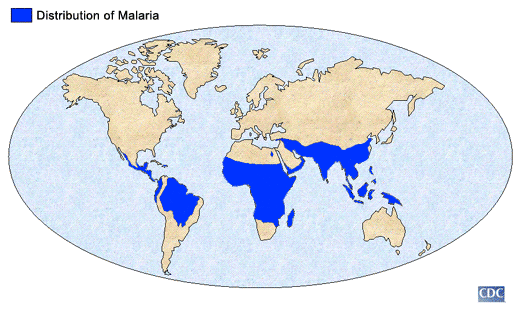 |
Where malaria
is found depends mainly on climatic factors such as temperature, humidity,
and rainfalls. Malaria is transmitted in tropical and subtropical areas,
where:
Temperature
is particularly critical. For example, at
temperatures below 20°C (68°F), Plasmodium
falciparum (which causes severe malaria) cannot complete its growth
cycle in the Anopheles mosquito, and thus cannot be transmitted.
 |
|
Geographic
Distribution of Malaria
|
Even within
tropical and subtropical areas, transmission will not occur:
- At high
altitudes
- During
cooler seasons in some areas
- In
deserts (excluding the oases)
- In some
islands in the Pacific Ocean, which have no local Anopheles species
capable of transmitting malaria
- In
some countries where transmission has been interrupted
through successful eradication.
Generally,
in warmer regions closer to the equator:
- Transmission
will be more intense
- Malaria
is transmitted year-round
- P.
falciparum predominates.
The highest
transmission is found in Africa South of the Sahara.
In cooler
regions, transmission will be less intense and more seasonal. There,
P. vivax might be more prevalent because it is more tolerant of lower
ambient temperatures.
In many temperate
areas, such as western Europe and the United States, economic development
and public health measures have succeeded in eliminating malaria. However,
most of these areas have Anopheles mosquitoes that can transmit
malaria, and reintroduction of the disease is a constant risk.
Travelers
planning a visit to areas with potential malaria risk can consult
the destinations pages on the Travelers' Health site.
Page last modified : April 23, 2004
Content source: Division of Parasitic Diseases
National Center for Zoonotic, Vector-Borne, and Enteric Diseases (ZVED)
|
 |
|



